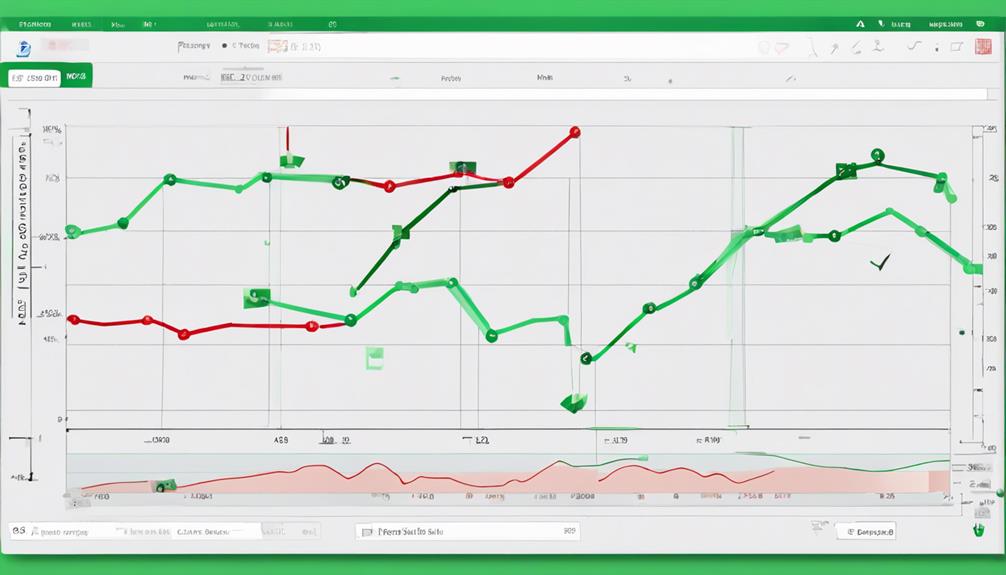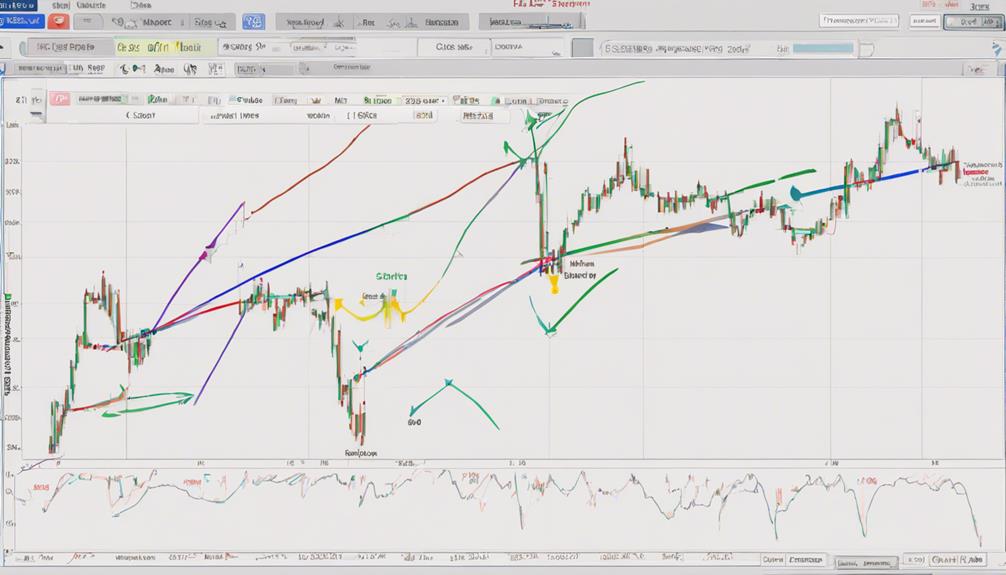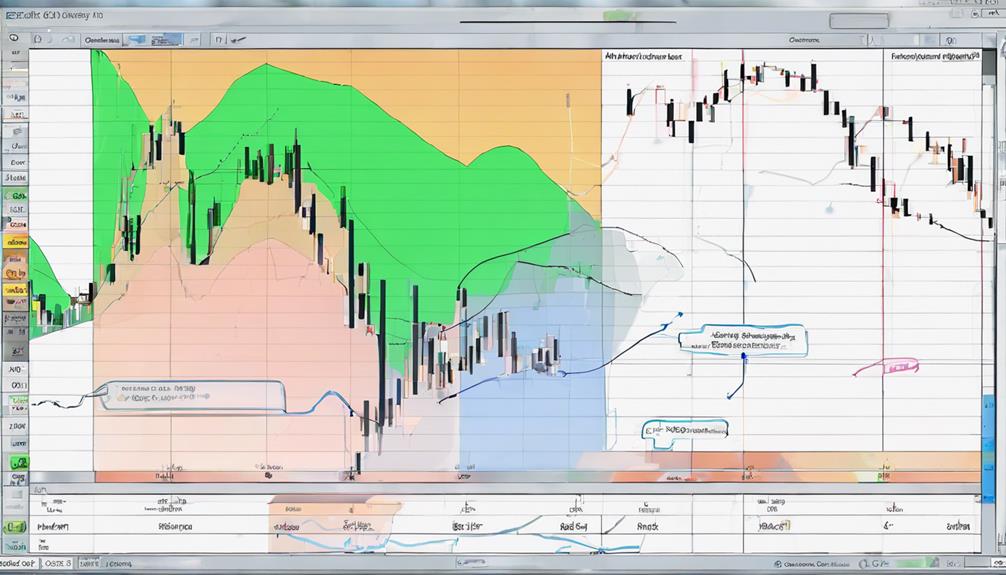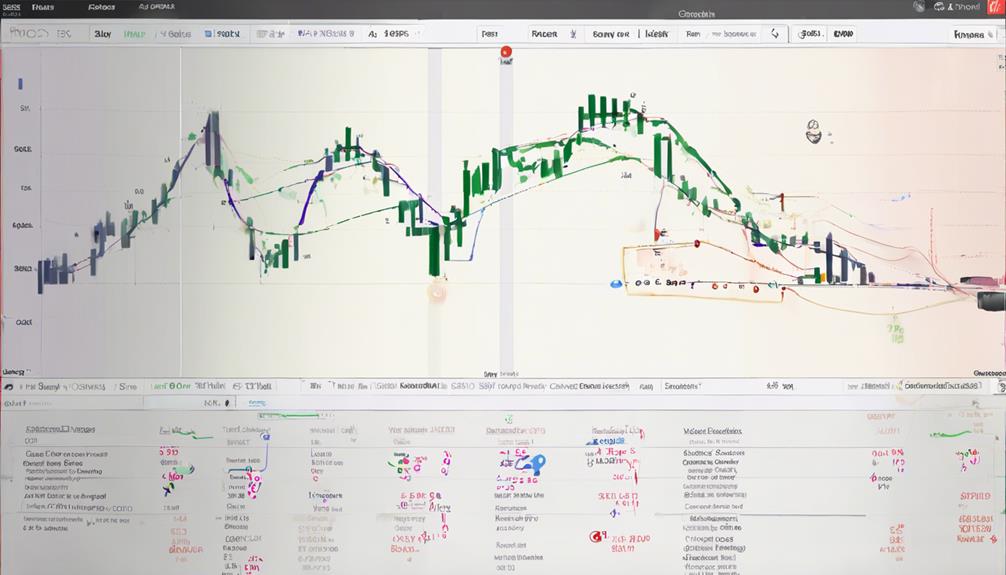The Chaikin Money Flow (CMF) indicator serves as a valuable tool for beginners seeking insights into market dynamics. By examining the interplay between price and volume, the CMF offers a nuanced perspective on the buying and selling pressures influencing a stock.
Understanding how to interpret CMF values can empower novice traders to make informed decisions and navigate market trends more effectively. This indicator's practical applications extend beyond mere technical analysis, providing potentially lucrative opportunities for those willing to explore its intricacies further.
Overview of Chaikin Money Flow Indicator
The Overview of the Chaikin Money Flow Indicator provides a comprehensive understanding of this volume-weighted indicator's significance in measuring the accumulation and distribution of a stock. Developed by Marc Chaikin, the Chaikin Money Flow (CMF) is a technical indicator that evaluates the relationship between the stock's closing price and its high-low range over a 21-day period.
When CMF values are above the zero line, it suggests buying pressure, while values below indicate selling pressure. Traders utilize CMF to confirm breakout directions, identify potential buy or sell signals, and gauge the strength of a stock's trend.
Understanding the Calculation Process

Utilizing a proprietary calculation method, the Chaikin Money Flow Indicator evaluates market dynamics by analyzing the relationship between stock prices and trading volumes.
The indicator calculates the money flow multiplier by comparing the closing price to the high-low range, determining the money flow volume by multiplying the money flow multiplier by the volume for each period.
The CMF formula involves computing the 21-day average of the daily money flow and dividing it by the 21-day average of volume. This process aids in identifying market buying or selling pressure over a specific period.
The CMF oscillator fluctuates around the zero line, with values typically ranging from +1 to -1, reflecting the strength of buying or selling pressure in response to price movements.
Interpreting Chaikin Money Flow Indicator

An essential aspect of interpreting the Chaikin Money Flow Indicator involves understanding its role in assessing market dynamics and identifying buying or selling pressure. The CMF indicator, developed by Marc Chaikin, uses volume, accumulation, and distribution to calculate buying and selling pressure in a security.
Here are key points to consider when interpreting the CMF indicator:
- The CMF indicator is a type of money flow oscillator that analyzes price movements to determine buy and sell signals.
- Unlike the Relative Strength Index (RSI), the CMF indicator's trading signals are quite different due to its focus on volume and accumulation.
- The Chaikin oscillator is calculated using different elements to provide insights into market sentiment and potential trend reversals.
Practical Applications for Beginners

Exploring practical applications of the Chaikin Money Flow indicator can provide beginners with valuable insights into market dynamics and potential trading opportunities. This technical indicator, acting as a volume-weight relative to recent price movements, helps traders interpret price action effectively.
CMF values above zero suggest buying pressure, while values below zero indicate selling pressure. Beginners can utilize CMF to confirm price breakouts from support and resistance levels and identify divergence signals for potential trend reversals.
Tips for Effective Implementation

To effectively implement the Chaikin Money Flow indicator, traders should tailor the settings to align with their specific trading objectives and preferences. When using the indicator, consider the following tips for effective implementation:
- Customize Moving Averages: Adjust the exponential moving average periods to match the trading timeframe.
- Analyze Closing Prices: Pay attention to closing price movements in conjunction with CMF readings for more accurate signals.
- Utilize Accumulation/Distribution Line: Combine the oscillator and money flow aspects to determine whether buying or selling pressure is dominant in the market.
Frequently Asked Questions
How Do You Use Chaikin Money Flow Indicator?
To use the Chaikin Money Flow Indicator effectively, traders analyze buy and sell signals based on price proximity to highs and lows. Confirmation of breakout directions is done through trend lines and support/resistance levels. Sell signals occur in overbought conditions, while buy signals emerge in oversold territories.
What Is the Chaikin Indicator?
The Chaikin Money Flow (CMF) indicator quantifies the volume of money flow in the market to reveal buying or selling pressure. Developed by Marc Chaikin, it assists in confirming trends, measuring strength, and identifying potential market reversals or breakouts.
What Is the Value of the Chaikin Money Flow Indicator?
The value of the Chaikin Money Flow Indicator signifies market sentiment. Positive values denote buying pressure, negative values indicate selling pressure. Customizable for individual preferences, CMF aids in trend identification, breakout confirmation, and potential reversal signals, vital for informed trading decisions.
Which Money Flow Indicator Is Best?
When considering which money flow indicator is best, it's essential to assess the specific needs of your trading strategy. Factors like time frame, market conditions, and personal preferences will determine whether the Chaikin Money Flow (CMF) or Money Flow Index (MFI) is more suitable.
Conclusion
In conclusion, the Chaikin Money Flow indicator serves as a valuable tool for beginners in navigating the complexities of the stock market.
By analyzing the flow of money into or out of a stock, individuals can make informed decisions regarding market trends, potential buy or sell signals, and breakout directions.
Like a compass guiding a ship through turbulent waters, the CMF indicator provides direction and clarity in an ever-changing financial landscape.
